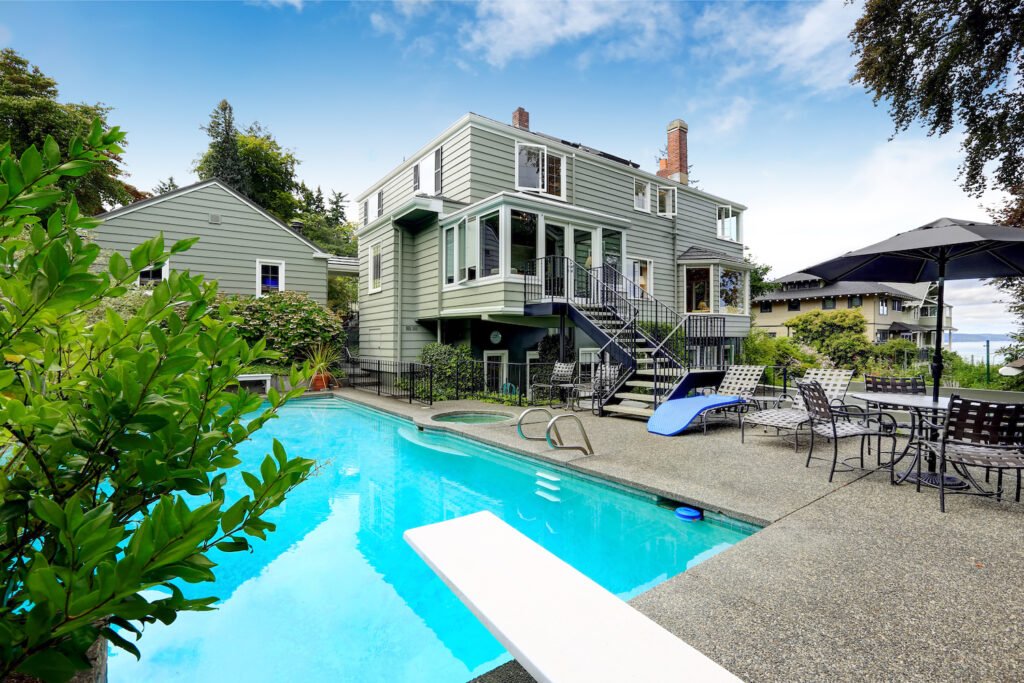Fiberglass vs. Concrete Pool? Which One Should You Get?

With the increasing popularity of fiberglass and concrete pools, it’s no wonder that homeowners are left wondering which type of pool is right for them. If you are one of these homeowners, then this blog post is for you. We’ll go over the pros and cons of each type of pool so that you can make an informed decision on which one to get for your home. We will cover different areas such as initial cost, maintenance cost, customization, and more.
What’s the Right Pool for You?
Aside from an added space where your family and friends can gather and enjoy during the warmer months, a pool also serves as a great way to improve the value of your home. But with the wide range of pools available in the market today, it can be quite confusing to decide which one is the best fit for your property.
To help you out, here is a comprehensive guide that compares the fiberglass vs. concrete pool:
Initial Cost

Concrete Pools
The concrete pool or gunite pool is a type of inground pool and is arguably the most expensive type of pool that you can buy. The average cost of a concrete pool ranges from $50,000 to $100,000. The reason for its high price tag is that the construction process of a shotcrete pool is quite labor-intensive, and it takes longer to build compared to other types of pools.
Fiberglass Pools
Fiberglass pools, on the other hand, are quite popular not only because of the ease of installation but also because of their reasonable price. Depending on the size and features that you want to incorporate, a fiberglass pool can cost you less than $20,000 if you choose to do it yourself. If you’re going to hire a professional to do it for you, the average cost ranges from $20,000 to $85,000 or more. This price range highly depends on the accessories that you want to add to your pool as well as the complexity of the design.
Maintenance
Concrete Pools
Concrete pools are pretty daunting when it comes to maintenance. They require you to constantly check the pH levels and alkalinity of the water, which can be pretty tedious. Not to mention that you have to resurface them every 10 to 15 years, which can be quite costly. Algae also grows easily in concrete pools so having a cleaning service every once in a while is required. You can expect to pay an average of $1,200 a year for the maintenance of your concrete pool.
Fiberglass Pools
When it comes to maintaining your fiberglass pool, you don’t have to be as hands-on as you would with a concrete pool. Due to the material’s non-porous gel-coat surface, it requires less cleaning compared to concrete pools.
Customization Options

Concrete Pools
The most unique advantage of concrete pools is their customization options. You can pretty much design and build it however you want it, and the freedom to design is only limited to your imagination and budget. Whether you want a waterfall, a grotto, or a custom-shaped pool, concrete pools allow you to make it happen.
Fiberglass Pools
Fiberglass pools are often pre-constructed, which means that you have limited options when it comes to customization. The upside to this is that the installation process is quicker since the pool doesn’t have to be built from scratch.
Final Thoughts
Regardless of which, both the fiberglass and concrete pool have their own unique advantages and disadvantages. The best way to decide which one is right for you is by carefully assessing your needs, budget, and preferences. Doing so will help you narrow down your options and choose the right pool for your home.
Make sure to contact a professional to know more about the installation process and other factors you need to consider before making a decision.
Recent Comments